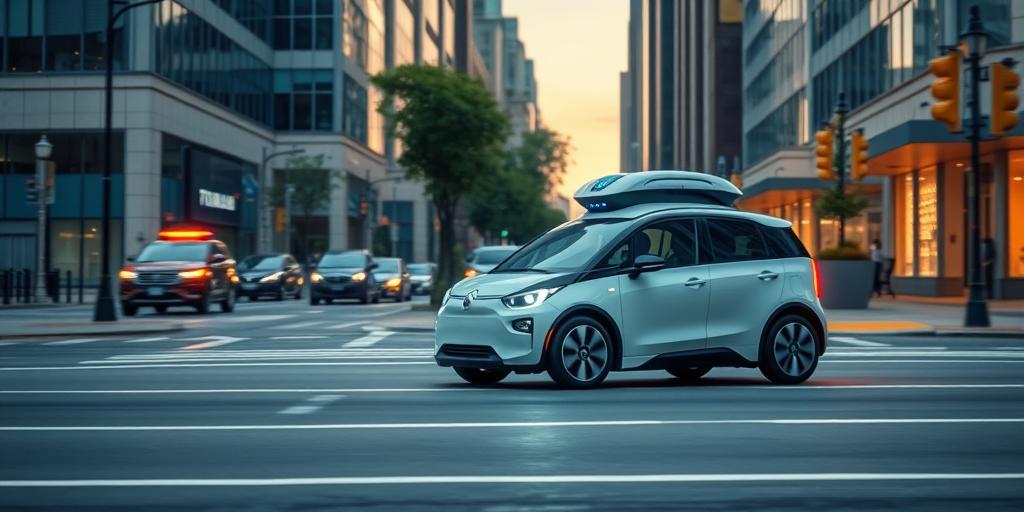Self-Driving Cars: Progress, Challenges, and Timelines
Self-driving cars, also known as autonomous vehicles, represent a transformative technology poised to reshape transportation as we know it. This post explores the current state of self-driving car technology, the hurdles that remain, and realistic timelines for widespread adoption.
Current Progress
Significant strides have been made in the development of self-driving technology. Companies like Tesla, Waymo, and Uber have invested billions in research and development, resulting in impressive advancements. These include:
- Advanced Sensor Technology: Self-driving cars rely on a suite of sensors, including cameras, radar, and LiDAR (Light Detection and Ranging), to perceive their surroundings. These sensors provide a 360-degree view, enabling the vehicle to detect objects, pedestrians, and other vehicles.
- Sophisticated Software Algorithms: The data collected by sensors is processed by complex algorithms that allow the car to make decisions in real-time. These algorithms use machine learning techniques to improve over time as they encounter new scenarios.
- Pilot Programs: Several companies have launched pilot programs in select cities, allowing the public to experience self-driving technology firsthand. Waymo's Waymo One service, for example, offers fully autonomous rides to passengers in certain areas of Arizona and California.
Remaining Challenges
Despite the progress, significant challenges remain before self-driving cars can achieve widespread adoption:
- Technological Hurdles:
- Handling Complex Scenarios: Self-driving cars still struggle with unpredictable situations, such as navigating construction zones, responding to emergency vehicles, and driving in adverse weather conditions.
- Edge Cases: These are rare and unexpected events that the car's algorithms have not been trained to handle. Addressing these edge cases requires vast amounts of data and sophisticated machine learning techniques.
- Ethical Considerations:
- Accident Liability: Determining liability in the event of an accident involving a self-driving car is a complex legal and ethical issue. Who is responsible—the car manufacturer, the technology provider, or the passenger?
- Algorithmic Bias: Ensuring that the algorithms used in self-driving cars are free from bias is crucial. Biased algorithms could lead to discriminatory outcomes, such as disproportionately affecting certain demographic groups.
- Regulatory and Infrastructure Issues:
- Lack of Uniform Regulations: The absence of consistent regulations across different jurisdictions is hindering the deployment of self-driving cars. A patchwork of rules makes it difficult for companies to operate across state lines.
- Infrastructure Readiness: Many roads and highways are not yet equipped to support self-driving technology. Upgrades to infrastructure, such as improved road markings and communication systems, are needed.
Timelines for Widespread Adoption
Predicting the exact timeline for the widespread adoption of self-driving cars is challenging, as it depends on overcoming the aforementioned hurdles. However, experts offer a range of estimates:
- Limited Deployment (2025-2030): We can expect to see continued expansion of pilot programs and limited deployment of self-driving cars in well-defined areas. These vehicles will likely operate under strict conditions and require human oversight.
- Wider Availability (2030-2040): As technology improves and regulations become clearer, self-driving cars could become more widely available to consumers. However, full autonomy (Level 5) in all conditions may still be years away.
- Mass Adoption (2040+): If the remaining challenges are successfully addressed, self-driving cars could become a common sight on roads by 2040 and beyond. This would require significant advancements in technology, infrastructure, and regulatory frameworks.
Conclusion
Self-driving cars hold immense potential to revolutionize transportation, offering benefits such as increased safety, reduced congestion, and improved accessibility. While significant progress has been made, substantial challenges remain. Realistic timelines suggest that limited deployment will continue in the near term, with wider availability possible in the coming decades. Overcoming the technological, ethical, and regulatory hurdles will pave the way for a future where self-driving cars are a ubiquitous part of our lives.









